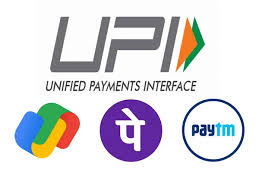PRELIMS Bits

Introduced By
- Launched by the National Payments Corporation of India (NPCI) in 2016.
- Regulated by the Reserve Bank of India (RBI).
Purpose / Significance
- Facilitates instant, real-time interbank fund transfer.
- Works 24×7, including holidays.
- Promotes digital payments and reduces dependency on cash.
How UPI Works
- Virtual Payment Address (VPA): User creates a unique ID (e.g., name@bank) linked to their bank account.
- Authentication: Uses MPIN (mobile banking PIN) for security.
- Transaction Modes:
- Peer-to-Peer (P2P) – transfer between individuals.
- Peer-to-Merchant (P2M) – payment to merchants.
Key Features
- Instant Transfer – funds transferred in real-time.
- Interoperability – works across multiple banks and platforms.
- Single Mobile Application – multiple bank accounts can be accessed via one app.
- Request & Collect Money – user can send a request and receive payment.
- QR Code Payments – supports scanning for payments.
Benefits
- Safe and Secure: Uses two-factor authentication as per RBI norms.
- Convenient: No need to remember IFSC or account numbers.
- Low-cost: Minimal charges for transactions.
- Boost to Digital Economy: Facilitates cashless India initiatives.
Recent Developments
- UPI 2.0 introduced with features like:
- Linking overdraft accounts.
- One-time mandates for recurring payments.
- Invoice in the inbox for merchant payments.
- International UPI: India working on UPI expansion to other countries for cross-border payments.




